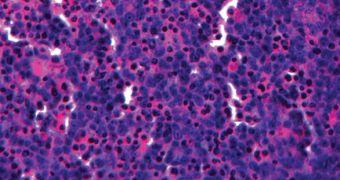You can 3D print everything these days, it seems, from metal guns to livers. There's been a lot of progress on 3D printing live tissue, and the technique boasts plenty of potential.
While it's far removed from 3D printing a Yoda head on your RepRap, the basic principle of additive manufacturing is the same, hence the label of 3D printing.
Organovo has announced that it has successfully built a functioning human liver, albeit a very small one, which survived for 40 days in laboratory conditions. The liver is just half a millimeter deep and four millimeters wide, but it mimics a working human organ.
The liver was built one cell layer at a time and, to achieve this new record lifespan, the researchers used a combination of liver cells that more closely resembles an actual liver. While the 3D printed liver material is small, it can still be used for testing and medical research, so it's an actually usable product, not just a scientific curiosity.
"Organovo’s NovoGen Bioprinting platform was utilized to generate bioprinted liver tissue prototypes that contain both parenchymal and non-parenchymal cells in spatially controlled, user-defined geometries that reproduce compositional and architectural features of native tissue," the company explained.
"One advantage of our automated bioprinting platform is that it enables fabrication and comparative testing of multiple compositions and geometries so that winning combinations can be identified systematically based on histological and functional outcomes," it added.
The big problem with 3D printed or grown tissue so far is that the techniques are only able to replicate cells on a small scale.
Build anything bigger than a few millimeters and the cells on the inside start dying from oxygen and nutrient starvation, due to the lack of a blood vessel network. In fact, the big push in the field right now is 3D printing artificial blood vessels, out of synthetic materials, and then growing the tissue on top of those.

 14 DAY TRIAL //
14 DAY TRIAL // 